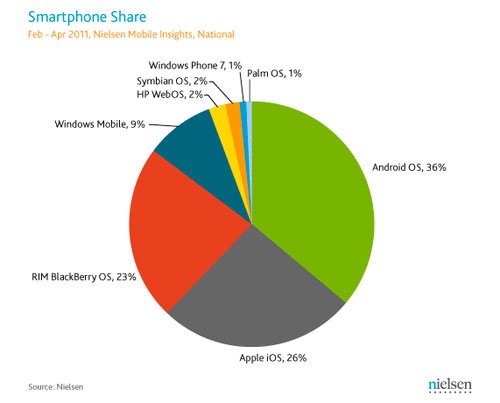An Open Source T-Rex model that was downloaded and 3D Printed at home with carbon fiber on a consumer grade printer.
Your can read the original post by AstroPrint, EvoNexus graduate and Coworking @ The Vine member, on Medium.
3D Printing may not yet be ubiquitous in consumer homes, but that day is approaching fast.
However, we have a bit of a problem with mass adoption of 3D Printing: it’s not such a pleasant experience for the average non-techie consumer.
Meaning, at the moment, the software required to operate these 3D Printers is incredibly complicated and unreliable.
At the time of this writing, there are countless 3D Printer manufacturers that are creating their own custom software to operate these printers.
One of the motivations for creating such software instead of settling on a proven solution is due to the hope that their solution would be the winning horse in the 3D Printer race.
It’s a perfectly reasonable strategy, albeit, one with its own set of flaws, flaws that may actually slow down the 3D Printing industry as a whole.
Why?
Mass adoption and market capitalization may be the ultimate goal of technology companies, but when is it appropriate to throw in the towel and retreat with your cavalry? Especially when your team is fervently backing up (your) failing solution?
History may not repeat, but it certainly rhymes
Consider the case of Toshiba’s HD DVD and Blu-ray for a moment.
The adoption of these technologies (HD-DVD or Blu-ray) by various Hollywood studio(s) played a huge role in crowning the ultimate victor.
This (format) war lasted approximately TWO YEARS with Toshiba finally running home with a bloodied nose and a failed product.
Despite the loss, Toshiba’s retreat was not only necessary for the industry; it was necessary for Toshiba itself. After all, burning resources on a losing contender is not good business practice, so it makes sense to abandon ship. Intelligent retreat is sometimes an underrated skill.
If more businesses retreated at the right time, they would be able redirect wasted resources into a better cause instead of forcefully swimming upstream the market.
Naturally, the question is: When is it the best time to retreat with your current strategy when you and your team has so much belief in your product that it is bordering on religious fervor?
As Mark Twain says, history doesn’t repeat itself, but it DOES rhyme.
And as such, we stand at a familiar fork in the road with the 3D Printing industry.
How the 3D Printing industry is fragmented
Currently there are countless 3D Printer manufacturers (OEM’s) creating their own version(s) of printer operating software in the hopes that their software will be chosen by the early adopters of 3D printers.
While the intention behind this strategy is well and good, one must wonder: is it indeed the best course of action for these companies and more importantly, the 3D Printing industry as a whole?
With such an approach, a likely scenario is more fragmentation of an already fragmented industry.
As of this writing, Zeus AIO Robotics, FabTotum, XYZ Printing,Cubify, MakerBot and Pirate3D are a short list of companies creating their own 3D Printer operating systems that are forcing market fragmentation. But, what if one of these companies end up becoming the dominant player in the 3D Printer Operating System game and the market ends up crowning them as the winner?
That’s an (unlikely) possibility.
In my opinion, a more likely outcome is the following:
The 3D Printing industry as a whole will be slowed down and the end user will eventually pay the price for these (incessant fragmentation) decisions with complex software and less than stellar compatibility with their printers.
3D Printers shouldn’t be reserved for geeks and early adopters; it should be accessible to your grandmother as well. This is the entire point of technology. It’s supposed to vastly improve the lives of human beings.
What we need is a robust, open source solution that will solve both compatibility and ease of use issues for manufacturers and end users alike.
If in fact, history does rhyme, I would wager that technology wars are destructive to ALL competitors because, in the heat of battle, consumers will ultimately refrain from adopting either solution out of fear of committing to a losing standard. (See: Dranove, David; Neil Gandal. “Surviving a Standards War: Lessons Learned from the Life and Death of DIVX“. Idea Group Inc.)
Having a single, universal operating system for 3D Printers is actually a win/win scenario for both 3D Printer manufacturers AND consumers because, with this approach, both ease of use and compatibility issues are solved.
It’s a bit like Android in that, not only manufacturers can do what they do best (i.e.: manufacture the hardware) and simply throw in a proven, easy to use, compatible operating system into their printer(s), developers can also build creative applications on top of that operating system which end up benefiting the end user and the industry as a whole.
We all know the incredible power and limitless economic implications of this “platform” approach. The applications are only limited by human imagination.
The goal of AstroPrint is to be a unifying solution for the entire industry. AstroPrint is the glue that holds consumer 3D Printers together. Not only that, since AstroPrint is a printer agnostic operating system that is dead simple to use, it also addresses compatibility issues and ease of use for both the manufacturer and the end user.
What more could you ask for?
Speaking of historical context, Android OS is another excellent example .
.
Ever wonder why Google gave Android OS (sort of) free of charge to OEM’s?
While Android’s core was open source, Google required OEM’s to install Google Mobile Services (GMS, which includes Gmail, Chrome, Google+, Google Maps, Google Docs, YouTube, Google Play etc.) with their free license.
The only requirement for such license was that your hardware got tested for compatibility.
That’s the answer: compatibility.
In the end, Android got mass adoption because of compatibility. It runs on a wide variety of handsets ranging from high-end flagship phones to low cost prepaid phones. Consumers had the option of buying the grand elixir of android phones or a cheap poor mans phone and still run Android.
What’s not attractive about that proposition?
3D Printing may not yet be as common as mobile computing, but that day is approaching at breakneck speed and the decisions made by industry leaders will ultimately shape the consumer 3D Printing experience.
Take a look at the popularity of 3D Printing on Google Trends. The applications of 3D printing are obviously unimaginable and we are already seeing incredibly creative uses of 3D printers. There will be an exponential increase in such creativity in the next decade.
The state of consumer 3D printing is a bit more like the “Internet” in the early 1990’s.
As an OEM, the desire to create your own printer operating software is a natural instinct, but one that may be counterproductive to the industry as a whole.
Instead of fragmented solutions, what we need is an easy to use, robust solution that is widely compatible with a long range of 3D printers.
That’s our primary focus.
Sometimes, the most intelligent strategy is to retreat in battle so that one can come back victorious in War.
Ultimately, winning the war is what we are all after.
—
AstroPrint is the fastest growing cloud platform for consumer 3D Printing. It allows you to manage your 3D Printer from ANYWHERE in the world from ANY device.
Don’t miss out on Vine updates! Subscribe to our blog and news from The Vine.





